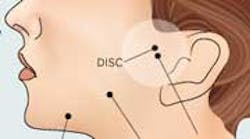What is TMJ? Is it a joint, a disorder, another term for “lockjaw,” or is it something else?
TMJ is a lot of things, impacting a lot of people. According to the TMJ Association, in the United States alone, about 35 million people, or one out of eight, are living with TMJ symptoms and pain on any given day.
ADDITIONAL READING |Coding for TMD
The TMJ, or temporomandibular joint, is actually two joints operating together moving side-to-side, up and down, and forward to back where both joints have to work simultaneously. With the TMJs complexity and proximity to the neck and neurological systems, when any part of the TMJ functions incorrectly, it causes the disorder known by the same name.
ADDITIONAL READING |The restful jaw: helping take the fear out of dental appointments for TMJ/TMD patients
November is TMJ Awareness Month, during the time of year when many elements can trigger TMJ symptoms or exacerbate them. With the holiday season upon us, people eat different foods that may cause jaw pain, and the stress of holiday planning and entertaining can also impact TMJ.
While many people associate TMJ with the lockjaw symptom, it is only one of the many symptoms and pain people live with. Other symptoms may not necessarily seem to be jaw-related at first, but may all be pointing to an issue with one of the most powerful and complex joints in your body.
Learn the symptoms of TMJ:
- Jaw locking, pain or popping, the most commonly-associate symptom
- Difficulty chewing with stiffness in the jaw
- Headaches as intense as migraines, a common symptom
- Ear pain, aching and ringing
- Upper back, neck and shoulder pain or tenderness
- And others
Learn more about TMJ, its causes, and ways to improve the symptoms if you or a loved one is living with this painful disorder. Dr. John Mitakides of the The TMJ Treatment Center in Beavercreek, Ohio, is one of the leading practitioners in the region and country for TMJ diagnosis and treatment.
“We talk with people and see patients who have one or two symptoms, but don’t consider that the headaches or ear pain they experience could be caused by TMJ,” said Dr. John Mitakides. “What I want to see is these individuals, and all people living with TMJ, working with experienced and qualified practitioners to help them regain their quality of life.”
Dr. Mitakides has dedicated his 40 year dental career to treating people who live with TMJ disorder and related issues, including craniofacial pain and sleep disorders. Along with Dr. Mitakides receiving top designations in this field, including diplomate of the American Academy of Craniofacial Pain (AACP) and Diplomate of Dental Sleep, two of his assistants are Expanded Function Dental Assistants and Certified TMJ Assistants, making the TMJ Treatment Center in the Dayton, Ohio-area one of the most experienced and equipped to make a positive, lasting impact on people living with TMJ.
View the TMJ Awareness infographic for more facts about the causes, symptoms and what to do if you have TMJ.






